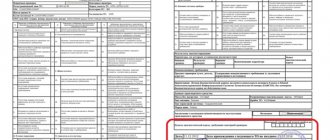- 1. When should I change my car’s shoes in winter 2021? 1.1. What does the law say?
- 1.2. Are there only summer tires until December?
- 3.1. Other requirements
- 4.1. What if a traffic police officer wants to fine you?
There is a law on winter tires in winter in Russia. And this is not the first year. This means that you will need to change to winter tires for the 2021 season. All that remains is to figure out when it is necessary to change tires, from what date it is prohibited to drive a car with summer tires: from October, November or December and what the fine will be if you do not change them in a timely manner, as well as what can be considered winter tires and other requirements for them.
When should you change your car's shoes in winter 2021?
According to official law, from December 1, 2021. If somewhere you see data that you need to change to winter tires from November 1 or even October or in other dates in the legislative context, then this is not true.
The legislation clearly and precisely defines the terms within which it is necessary to use only winter tires:
- December (not November),
- January,
- February 2021.
In general, this is all you need to know about the law on winter tires and the timing of their replacement in Russia. If you need “proofs”, then they are lower! It is also important to know the specific requirements for winter tires on your car.
What does the law say?
Here's what:
5.5... It is prohibited to operate vehicles that are not equipped with winter tires that meet the requirements of paragraph 5.6.3 of this appendix during the winter period (December, January, February). Winter tires are installed on all wheels of the vehicle. The terms of the operation ban may be changed upward by regional government bodies of the member states of the Customs Union.
This is an excerpt from the Technical Regulations. The same is written in the traffic rules. As you can see, there is no November, and regarding the time when you need to switch to winter tires, there are 2 important subtleties:
- paragraph 5.5 of the regulations refers to another - 5.6.3 in terms of meeting the requirements for winter tires, even if installed within the period prescribed by law,
- Regional administrations can apply their own rules when changing a car to winter tires.
Regarding the last point, we have good news for you - as of 2021, not a single region of Russia has changed the general procedure for tire replacement periods, and throughout the country you need to wear winter tires starting from the first day of December.
But we need to pay a little more attention to the first point - this is where we are given clear criteria for what winter tires are according to the law in principle. And let's find out!
Are there only summer tires until December?
Of course no. For summer tires, the requirements do not apply to the entire remaining 9 months. It is simply prohibited to drive on winter tires during the summer months - June, July and August, this is prescribed by the same paragraph 5.5 of the Technical Regulations. So, in October or November, for example, you can drive either summer or winter tires.
Winter tire requirements for 2021
The requirements for vehicles in use, including wheels and tires, are established by Appendix No. 8 of the current Technical Regulations. The law on winter tires was amended from November 1, 2018 and supplemented with new provisions on the categories of cars on which it is necessary to install anti-skid tires, the period of use of such tires, as well as a number of prohibitions. According to the document, all motorists were required to switch to winter tires from December 1, 2021 and not “change shoes” for the next 3 months, unless otherwise provided by federal law. The technical regulations also contain the following requirements for winter tires:
- Installation on all wheels of the car (section 5.4). It is not allowed to use winter, summer and all-season tires on the same axle;
- Mandatory installation of winter tires on cars and trucks up to 3.5 tons;
- Prohibition on the use of tires with studs in summer (clause 5.5);
- Prohibition on driving a car in winter without winter tires (clause 5.5);
- The terms of use of winter tires may be changed by federal legislation;
- Prohibition on the use of winter tires with a residual pattern height of no more than 4 mm;
- The presence of markings in the form of mountain peaks and snowflakes in the center;
- Prohibition on the use of vehicles whose tires are damaged (cracks, bulges, etc.).
Clauses 5.6, 5.7, 5.8 of the Appendix establish general requirements prohibiting the use of certain tires. They concern tires that are unsuitable for use and the specifics of using retreaded tires. Certain provisions concern methods of fastening disks and their shape. The law on studded tires does not specify the exact date of installation of such tires on a car. This is largely due to the fact that the territory of the Russian Federation is quite vast and has significant differences in climate. But every driver must equip his car with winter tires before ice, ice and snow cover appear on the roads.
Important note!
- This article provides basic information, but each case is different.
- In 92% of all situations there are important nuances that can affect the outcome of the entire case.
- An experienced lawyer will study all the materials of the case and indicate in which direction to move.
Therefore, our website employs on-duty legal consultants who delve into each case and are aimed at solving it.
Ask a Question
or consult toll-free (Moscow), (St. Petersburg), 8 (all of Russia).
New fines for motorists in the Russian Federation: now for out-of-season tires and non-standard headlight bulbs
Russian drivers will soon be able to “get” new fines: they will be “helped” with this by an updated version of the list of faults and conditions under which the operation of a vehicle is prohibited (of course, if the corresponding draft of the State Traffic Safety Inspectorate is accepted). The document is now posted on the website regulation.gov.ru. Let us remind you that this list is an annex to the Road Traffic Rules in force in the country.
According to today's standards, if a traffic police inspector, during an inspection, discovers violations that are on the list, he has the right to impose a fine under Article 12.5 of the Code of Administrative Offenses of the Russian Federation. Now the department has decided that this document needs to be correlated with the technical regulations of the Customs Union on wheeled vehicles (TR-TS) of 2011.
It turns out that the new norms have been in force for a long time, but traffic police officers cannot punish car owners for their violations, since some of the points are not in the list appendix to the traffic rules. Now they have decided to correct this “discrepancy”. The fine will be minimal (500 rubles). This is how much you will have to pay, for example, for using tires out of season: that is, for those who drive on studded tires in the summer and summer tires in the winter. Those who installed winter tires on only one axle will also be punished (some drivers who want to save money come to this decision).
As Kommersant reports, the list of violations will also include the installation of light sources in headlights that do not comply with the “operational documentation” in terms of class, base, power or color temperature. According to Grigory Shukhman, a member of the ONF traffic safety working group, after the approval of this item, it will become easier for road inspectors to identify cars with non-standard xenon and LED lamps.
In addition, you can receive a fine if the car's designed headlight cleaner does not work (some car owners turn it off intentionally to reduce the consumption of anti-freeze in the winter). Penalties will also be imposed on those who do not have sun visors in their car.
The updated list will also clarify the rules regarding car tinting. Now the traffic rules refer to GOST 1988, according to which the windshield and front side windows must transmit at least 75% of light. Whereas the current technical regulations indicate a different indicator - at least 70% (however, traffic police officers already check cars taking into account the newer standard, since the Code of Administrative Offenses refers to it). It is also planned to introduce an additional standard for tinting armored vehicles - at least 60% for the windshield and front side windows.
The Ministry of Transport of the Russian Federation also proposes to make amendments to the traffic rules: the department published its document in the middle of this month. Their proposals concern, among other things, parking on the so-called “safety islands”, additional speed limits for bus drivers, as well as those who travel on electric scooters, Segways, unicycles, as well as skateboards, roller skates, etc.
What tires are considered winter tires by law?
Everything is quite simple here too! The winter tires that you change from summer tires to December must have 2 essential attributes; without them, they are not considered winter tires, and you, therefore, violate the rules of the regulations:
- marking in the form of a mountain with 3 peaks and a snowflake inside,
- written designation with a combination of the letters M and S.
This is what the marking looks like:
This is what a real winter tire looks like with it:
And the law does not prescribe any differences for winter tires according to their type - be it studded tires, Velcro or all-season.
Other requirements
Another important requirement for winter tires is a limit on their wear. Specific figures are given in the traffic rules - 4 millimeters, this is the permissible remaining tread depth of winter tires. But there is an exception - if your tire is equipped with wear indicators, then you can use such tires until the last indicator.
Also among the requirements for any type of tires:
- absence of side cuts and cracks in which the cord is visible (if the cord is not visible, then you can ride),
- no tire delamination,
- the speed and weight index of the vehicle must correspond to
- all bolts or nuts on the wheels must be present,
- If the tires are studded, then the car must have a Studs sign.
There is a ban, but will there be fines?
What fines will car owners face if traffic police officers catch them wearing summer tires in winter?
In 2014, a bill was submitted to the State Duma of the Russian Federation for consideration, which proposed to supplement Article 12.5 of the Code of Administrative Offenses of the Russian Federation with Part 3.2, which stated that “driving a vehicle in violation of the requirements for the operation of tires and wheels entails an administrative fine in the amount of two thousand rubles.” . Consideration of this bill was postponed in 2015-16, but was never adopted.
Therefore, no separate sanctions are provided for the lack of winter tires on cars during the 2018-2019 winter season. The so-called “automobile” Chapter 12 of the Code of Administrative Offenses of the Russian Federation does not contain instructions in this regard. And this is surprising, because the law introduces an actual ban on the operation of cars on summer tires in winter. However, traffic police officers, who are obliged to monitor compliance with technical regulations, have the right to fine the driver under another related article.
Currently, if you wear out winter tires or wear summer tires in winter, a driver can be held liable for insufficient tread depth. Summer tires often have a shallow tread compared to winter tires. Therefore, in accordance with Part 1 of Article 12.5 of the Code of Administrative Offenses of the Russian Federation “Driving a vehicle in the presence of malfunctions or conditions under which the operation of vehicles is prohibited...” a warning or a fine of 500 rubles is imposed on violators.
What's the fine?
If you did not have time to change your shoes to winter tires in the 2021 season and are driving on summer tires, then... there will still be no fine!
The fact is that the Code of Administrative Offenses in force today provides for traffic police fines for violations of the Traffic Rules. But the obligation to change summer tires to winter ones is not specified in the traffic rules, but, as we quoted above, in the Technical Regulations. There are no penalties for violations of this regulatory act in 2021.
Information is being circulated online that as of December 1, 2021, a fine has been introduced for summer tires in winter. This is nothing more than a myth and you will not find official confirmation of it anywhere.
Everything is quite clear and simple here:
- There is no fine directly for the fact that you did not change your car to winter tires,
- but there are sanctions for non-compliance with tread depth and other requirements for winter tires.
What if a traffic police officer wants to fine you?
Then, with a high degree of probability, he is going to issue a resolution under Part 1 of Article 12.5 of the Code of Administrative Offenses. It provides for punishment in the form of a fine of 500 rubles for non-compliance with the Basic Provisions of the Traffic Regulations, namely, they contain the above requirements for tread depth after tire wear, the presence of a cord, the absence of nuts/bolts and others.
The resolution will say so - violation of clause 5.1 or other Basic Provisions for Vehicle Admission. But the majority of drivers, due to inattention, will not look at the regulation and will assume that they were given a fine for not changing their summer tires to winter ones. And even if they later see that the violation was replaced by a traffic police inspector, it will be difficult to prove the opposite.
When should you change your tires to winter ones?
According to the law in Russia in 2021, the winter period is considered to be three calendar winter months - December, January and February. This is enshrined in the technical regulations of the Customs Union “On the safety of wheeled vehicles” TR CU 018/2011. Clause 5.5 of Appendix No. 8 specifies the requirements for tires.
The content of this paragraph establishes the following rules:
- in summer (three months: June, July, August) the use of studded tires is prohibited,
- in winter (December, January, February, respectively), only winter options should be used (both studded and non-studded Velcro are allowed). Acceptable markings for winter tires: M+S, M&S or MS and the corresponding design,
- All-season tires can be used in winter only if they comply with the above markings.
Thus, the periods of rubber use correspond to the calendar seasons of the year, taking into account the off-season:
- summer ones can be used from March 1, 2021 to November 31,
- winter studded from September to May,
- studless winter tires all year round.
Thus, we come to the conclusion when to change to summer tires: from March to May. From September to November it is necessary to replace summer tires with winter ones; a specific date or period has not been established.
Will there be an increase in traffic police fines from November 20, 2021 - latest news
When to switch to winter tires in 2021? — general recommendations
Proponents of changing tires late most often motivate this by the fact that with an early change, tread wear increases and studs may fall out. Proponents of early tire change want to prepare for the season in advance and install winter tires while it is still warm enough. Indeed, with prolonged use of winter tires at high temperatures, their wear increases, so if you install winter tires too early, their service life may decrease somewhat. On the other hand, if you want to install winter tires when the first snowfall occurs, there is every chance you won’t even get to the tire shop. How to find the golden mean? The timing of replacement depends on whether you change the wheels yourself or entrust it to a tire service. If you change your tires at a tire shop, you should do it in advance, since when the temperature drops, the queues at these organizations grow like a snowball. If you change the wheels yourself, then you can delay the installation of the winter kit a little. The timing of tire replacement varies from year to year. For example, in 2021 the author changed tires on October 16, in 2015 - on October 5. In any case, it is better to be prepared in advance for changing tires. Even a small accident when snow falls unexpectedly, as always, will cost you more than a pair of lost studs or slightly more than usual tire wear.
Fines for improper use of tires
Since 2015, technical regulations have been in force in our country, which were developed in the Customs Union. This document states that during the period from December to February you cannot drive on the roads without winter tires. It is further written that in the summer months (June-August) only summer tires should be used. Naturally, Russia, which has many regions with different climatic features, makes adjustments to increase these intervals.
Important! The main thing that motorists should know is that there are penalties if the car is “shod” out of season. Its size reaches 500 rubles.
Each individual area has its own timing for replacing wheels, so you need to be guided by them. Traffic police officers are also guided by the climate characteristics of a given region and do not have the right to fine you if you are still within the deadline for replacing your tires. Usually, negligent drivers are punished in the form of fines with the onset of persistent cold weather.











